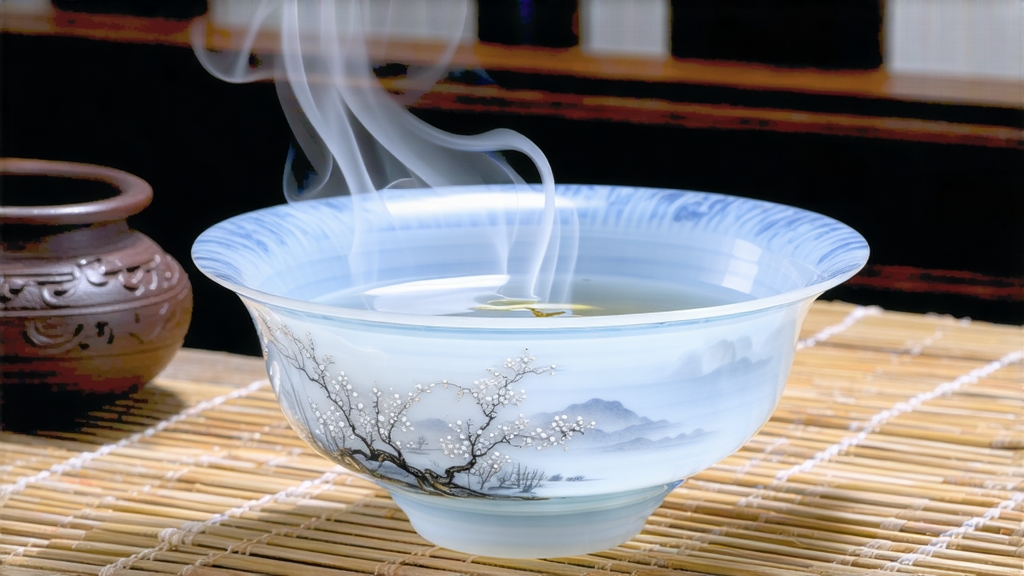
Bai Hao Yin Zhen—literally “White Hair Silver Needle”—is the most aristocratic expression of China’s white-tea family. To the uninitiated it can look almost too delicate to be tea: straight, silvery spears that seem to glow against any background, each one a down-covered embryo plucked before the leaf has even unfolded. Yet behind that fragile appearance lies a lineage stretching back to the late eighteenth century, a craft that balances silence and vigilance, and a cup that carries the cool scent of mountain mist and the warm sweetness of marzipan.
Origin stories differ, but the first reliably documented tribute of “silver needle” buds was sent from Fujian’s northern counties to the Qing imperial court in 1796. The county of Fuding, perched where the Wuyi ranges slip toward the East China Sea, won the favor of court tasters because its native Da Bai cultivar produced unusually large, amino-rich buds. When the empire fell and tribute lists vanished, the style survived as a local luxury, traded down the Min River to Fuzhou’s foreign hongs and, by the 1890s, quietly shipped through Hong Kong to London parlors where it was nicknamed “Chinese Silver Tips.” Modern fame arrived in 1979 when the Chinese Ministry of Commerce re-categorized white teas and placed Yin Zhen at the top of the pyramid; since then its price has climbed faster than any other white style, driven by domestic demand for both its mellow caffeine curve and its antioxidant catechins.
Strictly speaking, only two places may legally sell tea labeled Bai Hao Yin Zhen under China’s geographical-indication rules: Fuding and the neighboring county of Zhenghe. Within each zone the cultivar matters. Fuding Da Bai yields plumper buds with a higher bud-to-leaf ratio, giving a creamier liquor, whereas Zhenghe Da Hao produces slimmer, more aromatic buds that lean toward herbaceous top notes. Purists will taste side-by-side and speak of “Fuding moonlight” versus “Zhenghe sunshine,” a poetic shorthand for the different angles of mountain light and the slightly different withering rhythms the climates impose.
Craft begins in the pre-dawn chill of mid-March, when pickers—almost always women wearing bamboo hats—snap off the unopened bud and the immediate sliver of stem with a motion that resembles tweezing. The daily quota for an experienced hand is barely one kilogram of fresh material, which will shrink by 75 % before it reaches market. No crushing, no pan-firing, no rolling: the only intervention is the gift and gamble of air. The buds are laid, never stacked, on shallow bamboo trays set under shaded canopies called “green houses.” There they rest for thirty-six to forty-eight hours while moisture exits at a glacial pace and enzymatic chemistry conjures the tea’s signature hay-and-honey aroma. In Fuding the final desiccation is often finished by charcoal baking at temperatures below 40 °C, a step that stabilizes the buds without adding roast flavor; Zhenghe producers prefer sun-withering right up to 8 % moisture, trusting the county’s lower humidity. The entire cycle must be completed within five days or the buds begin to redden, forfeiting the category.
Western writers sometimes describe white-tea processing as “non-existent,” but mastery lies in reading the weather better than a sailor. If ambient humidity spikes above 70 %, buds can sour; if the wind freshens too strongly, they desiccate unevenly and the cup will show a hollow finish. A veteran tea maker once told me he sleeps in two-hour catnaps during harvest, waking to shuffle trays so that each bud spends time in the cooler bottom layer. Such vigilance explains why truly fine Yin Zhen costs more than many green teas despite the absence of elaborate machinery.
Storage is the next frontier. Unlike green tea, which fades within a year, Yin Zhen can evolve for a decade if kept cool, dry and away from odors. The transformation is the opposite of puer: instead of microbial fermentation, slow oxidation continues, turning the bright silver hairs a tawny gold and shifting the flavor from crisp melon to dried apricot, then to date and longan. Collectors in Guangzhou deliberately age small batches in clay jars, opening them only on the first full moon of the lunar year to mark the tea’s “birthday.”
To brew Silver Needle for western palates without betraying its frag